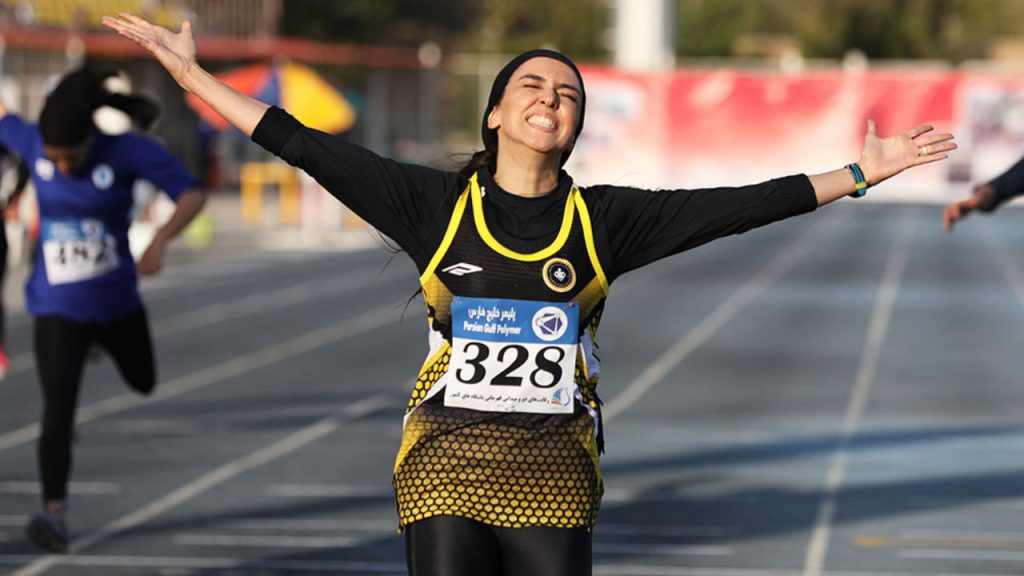
Kourosh Ziabari – Al-Monitor: As the 2024 Summer Olympics in Paris approach, Iran’s female athletes are speaking out publicly about the inequities in their professional journey, at a time the world is paying attention to the general trend of discrimination against women in Iran.
After Iran women’s national soccer team defeated Myanmar in April to make its way to the second round of the 2024 Olympic qualifiers from Asia, the squad’s captain, Zahra Ghanbari, described the victory over a higher-ranked opponent as phenomenal, lamenting the authorities’ failure to recognize them.
According to a report by Ham-Mihan Daily, each member of Iranian men’s national football team received $15,000 for beating Wales in the group stage of FIFA World Cup in Qatar last November. The bonus was in addition to the generous per diem the players received while in Doha. Ghanbari says after advancing to the second round of Olympic qualifiers, nothing has been disbursed to her and her teammates.
The most popular players in Iran’s men’s premier league are paid between $200-300,000 per season, while the salary of the best female players in the top tier of the national league doesn’t exceed $18,000, Ghanbari said.
Discrimination against female athletes in Iran is deep-seated and firmly rooted in the patriarchal culture. The disparities include a persistent gender pay gap, unequal access to media and limited publicity, and shortage of training facilities.
Farzaneh Fassihi, who competed for Iran’s track team in the Tokyo Olympics, holds the national record in the indoor 60-meter dash. She revealed this month that when she clinched a rare gold medal at the 2023 Asian Indoor Athletics Championships in Astana, she was offered only $1,600, by the athletics federation and the national Olympic committee. Ironically, she had to top up the bonus with 1,700 euros of her own savings to settle an outstanding debt to her international coach.
The religious zealots’ opposition to women’s sports hasn’t abated notably, even though they tend to rein in their inflammatory rhetoric on female athletes because the PR value of women in international events is significant. But female athletes on the provincial level or in smaller cities must overcome a multitude of barriers, including resistance by conservative families.
After the female rower Homa Hosseini was picked to be the country’s flagbearer in the opening ceremony of the 2008 Summer Olympics in Beijing, Ahmad Alamolhoda, the Friday prayer leader of the city of Mashhad, called the decision “a war on values.” Abdollah Javadi Amoli, a senior cleric and jurist, said after the successes of women karatekas in 2014 Asian Games that “the perfection of a woman lies in motherhood” and that “it is not a virtue for our women and girls to go and stretch their legs and kick someone and earn a medal for us.”
Negar Partow, a senior lecturer in security studies at Massey University in New Zealand, told Al-Monitor, “Since 1979, any achievement in setting up or maintaining women’s athletic teams in Iran has been because of the courage, determination, resilience and resistance of women against the oppression of the regime.”
Unfavorable professional conditions and pressure by the authorities, including compulsory hijab and strict gender segregation rules, have swayed many renowned sportswomen to leave Iran and seek asylum in other countries.
Kimia Alizadeh, a taekwondo practitioner and the first woman from Iran to win an Olympic medal, defected in 2020, describing a lingering pattern of exploitation and oppression. In the 2022 European Championships, she represented the Refugee Olympic Team.
When she became a national celebrity by winning her bronze medal in Rio in 2016, state media asked her leading questions on how proud she felt representing her home country with the hijab, which she acknowledged. After leaving Iran, she said those statements didn’t reflect her true intentions, and were made under pressure. She removed her headscarf upon migrating.
Azadeh Davachi, a Melbourne-based women’s rights activist and researcher, believes unfair treatment of women in sports in Iran is a structural problem.
“Systematic discrimination means that girls’ schools have fewer sports facilities. Women are still not allowed to go to stadiums to support their favorite teams, and the involvement of women in sports is still intertwined with the ideologies of the Islamic Republic, including the issue of hijab,” she said.
Despite the hurdles, women continue to be passionate about sports. Minister of Sport and Youth Hamid Sajjadi has said there are more than 16,000 sports clubs for women nationwide. But as the government is stiffening its crackdown on women, they seem to have a bumpy road ahead fulfilling their dreams.
This article was originally published in Al-Monitor
